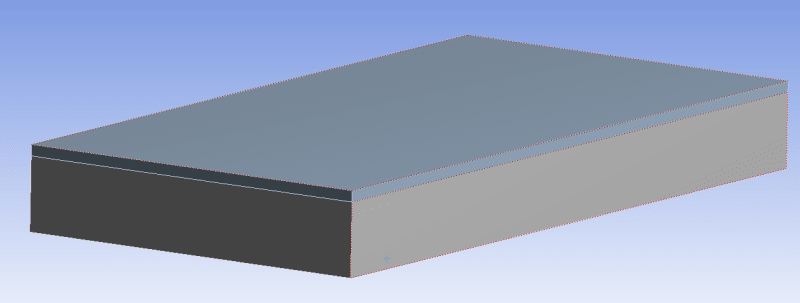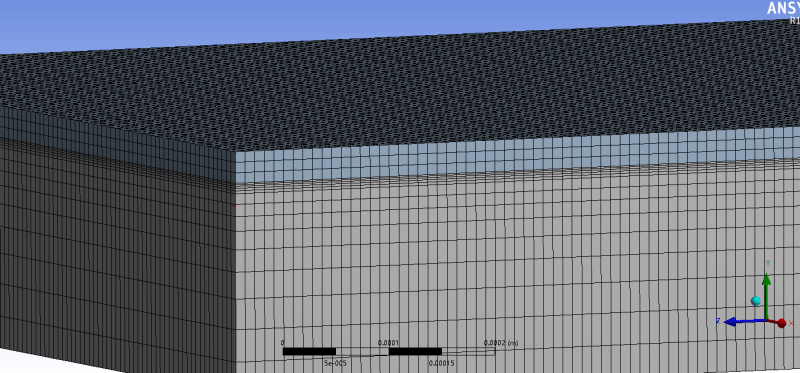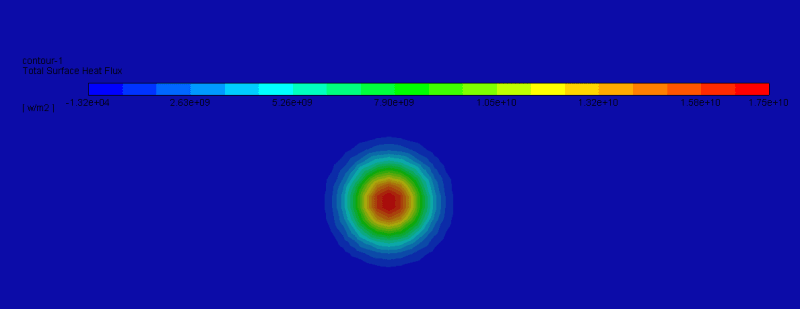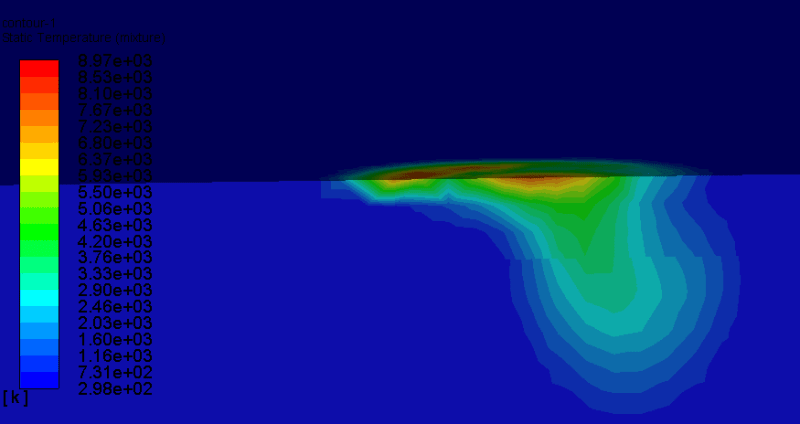Svenein
Mechanical
- Jun 11, 2018
- 1
In my case, I build 2 fluid zones connected by defined 2 interface zone shown as Fig 1, and the corresponding mesh is as shown in Fig 2. To simulate the SLM process, the upper zone is set by powder material and under zone is set by metal material.
Theses 2 types of material are defined by myself empirically, and then I add a moving Gaussian heat source on the top surface as boundary condition as shown in Fig 3. Also, surface tension gradient is considered on the top surface resulting Marangoni effect.
My puzzle is that:
If I set a negative surface tension gradient, the change of temperature only occur in the upper zone as time step increases (Fig 4), and all residuals curves have converged.
If I set a positive surface tension gradient, the temperature changes in both zones, but what can be observed is that it is discontinuous in the intersection of 2 zones (Fig 5). what's worse, the energy equation do not converge.
I wonder whether the way I tackle is okay, and it is also very confusing that the energy equation do not converge when given a positive surface tension gradient. I have tried conformal or even finer mesh on the interface, but it did not make sense.
if someone can give me some advise, that would be very helpful.
Thanks, sincerely

Fig 1 two as-built fluid zone

Fig 2 mesh

Fig 3 Gaussian heat source

Fig 4 temperature distribution for a negative value of surface tension gradient

Fig 5 temperature distribution for a positive value of surface tension gradient
Theses 2 types of material are defined by myself empirically, and then I add a moving Gaussian heat source on the top surface as boundary condition as shown in Fig 3. Also, surface tension gradient is considered on the top surface resulting Marangoni effect.
My puzzle is that:
If I set a negative surface tension gradient, the change of temperature only occur in the upper zone as time step increases (Fig 4), and all residuals curves have converged.
If I set a positive surface tension gradient, the temperature changes in both zones, but what can be observed is that it is discontinuous in the intersection of 2 zones (Fig 5). what's worse, the energy equation do not converge.
I wonder whether the way I tackle is okay, and it is also very confusing that the energy equation do not converge when given a positive surface tension gradient. I have tried conformal or even finer mesh on the interface, but it did not make sense.
if someone can give me some advise, that would be very helpful.
Thanks, sincerely

Fig 1 two as-built fluid zone

Fig 2 mesh

Fig 3 Gaussian heat source

Fig 4 temperature distribution for a negative value of surface tension gradient

Fig 5 temperature distribution for a positive value of surface tension gradient
